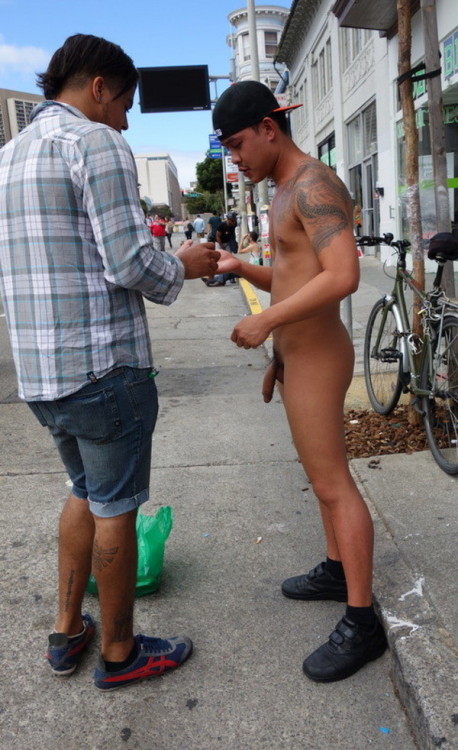-773100.JPG)
Clothing that invites CMNM situations Some types of clothing and certain social situations seem to invite CMNM (clothed male / naked male) and probably just as often CFNM (clothed female / naked male) behavior. It's not too surprising that one of those types of clothing is the kilt. Still, there are several other kinds of male attire that sometimes offer the opportunity for spontaneous partially nudity, at time under the guise of freeballiing, such include boardshorts, ethnic or traditional clothing (the 'kilt' is a Western invention for covering male anatomy), but there are other forms of masculine clothes from Asian, the Middle East, Africa, and Oceania that perform similar functions and which offer similar glimpses.

 Here are some recent photos from social events where guys were wearing kilts.
Here are some recent photos from social events where guys were wearing kilts. I wonder how many other national costumes or traditional clothes allow for freeballing? I've spent a lot of time in Japan and a few other countries where the national costume -- kimono or yukata (light summer informal kimono with fundoshi (loin cloth)) (at least it
 remains one of the traditional ways that some people dress --especially for festivals or typical Japanese cultural events) does make freeballing sort of accepted. As I said in an earlier post (Scottish singer in a kilt), I wonder how many national / native or traditional costumes make it easy (or not) to freeball and perhaps to catch a glimpse. We've seen that many guys wearing kilts do not have anything on underneath.
remains one of the traditional ways that some people dress --especially for festivals or typical Japanese cultural events) does make freeballing sort of accepted. As I said in an earlier post (Scottish singer in a kilt), I wonder how many national / native or traditional costumes make it easy (or not) to freeball and perhaps to catch a glimpse. We've seen that many guys wearing kilts do not have anything on underneath.  I have lived at times in Japan and still have strong connections to it. I find the kimono, and in particular the yukata, gives a great opportunity to freeball (go commando). The traditional kimono, which is really as formal nowadays as a tuxedo and not worn very often at all, does not work out
I have lived at times in Japan and still have strong connections to it. I find the kimono, and in particular the yukata, gives a great opportunity to freeball (go commando). The traditional kimono, which is really as formal nowadays as a tuxedo and not worn very often at all, does not work out very well for freeballing -- mainly because it is worn for ceremonial events and people are not likely to move around much. The kimono is also worn tightly bound and can have several undergarments and belts (obi) so that it is not likely to come open. Damn, it must even be difficult to take a leak or squat to use the bathroom. However, the yukata is quite a bit different. It is a casual summer kimono-like one piece outfit -- typically worn for festivals and as night wear / indoor wear at hotsprings resorts and fine hotels.Traditionally, Japanese men (and there are some people who do still) wear the yukata and its shorter version (the happi coat) as casual wear -- although mostly it is only during the summer and fall festivals, but a few for daily wear especially during the hot humid summer season.
very well for freeballing -- mainly because it is worn for ceremonial events and people are not likely to move around much. The kimono is also worn tightly bound and can have several undergarments and belts (obi) so that it is not likely to come open. Damn, it must even be difficult to take a leak or squat to use the bathroom. However, the yukata is quite a bit different. It is a casual summer kimono-like one piece outfit -- typically worn for festivals and as night wear / indoor wear at hotsprings resorts and fine hotels.Traditionally, Japanese men (and there are some people who do still) wear the yukata and its shorter version (the happi coat) as casual wear -- although mostly it is only during the summer and fall festivals, but a few for daily wear especially during the hot humid summer season.  just next door to the temple so he invariably invites me over when he knows I am in Japan. Perhaps he is just trying to be nice by introducing me to traditional Japanese culture -- Japanese are not very big on evangelical Buddhism (although I hear it does exist). On a recent trip to Tokyo, he insisted on measuring me for a yukata and told me he would have onr made for me and then show me how to wear it and we would go to a fireworks festival wearing a yukata. While he was measuring me, he got down on his knees in front of me (apparently in total innocence) but it sure made me wonder. He first had me pull off my trousers and then he measured about my waist and hips while I standing there in a bare of almost mesh semi see-thru boxers. I had to pull my t-shirt down over the front to conceal
just next door to the temple so he invariably invites me over when he knows I am in Japan. Perhaps he is just trying to be nice by introducing me to traditional Japanese culture -- Japanese are not very big on evangelical Buddhism (although I hear it does exist). On a recent trip to Tokyo, he insisted on measuring me for a yukata and told me he would have onr made for me and then show me how to wear it and we would go to a fireworks festival wearing a yukata. While he was measuring me, he got down on his knees in front of me (apparently in total innocence) but it sure made me wonder. He first had me pull off my trousers and then he measured about my waist and hips while I standing there in a bare of almost mesh semi see-thru boxers. I had to pull my t-shirt down over the front to conceal
This photo above shows a guy's full body tatoo (irezumi) -- still quite popular with a certain segment of the Japanese -- it was strongly associated with gangsters (yakuza) but less so nowadays. Notice thetwisted rope effect in the crack of his fundoshi -- wonder what that feels like -- maybe it helps keeps his semi-hard so that the spectators can enjoy the festival "show" even more. You can see different lengths of "happi" coats in this pic-- so the fundoshi is not really meant to be covered up -- although it can serve as underwear -- it is more like a 400 year old Japanese Speedo bikini or gym shorts.












No comments:
Post a Comment